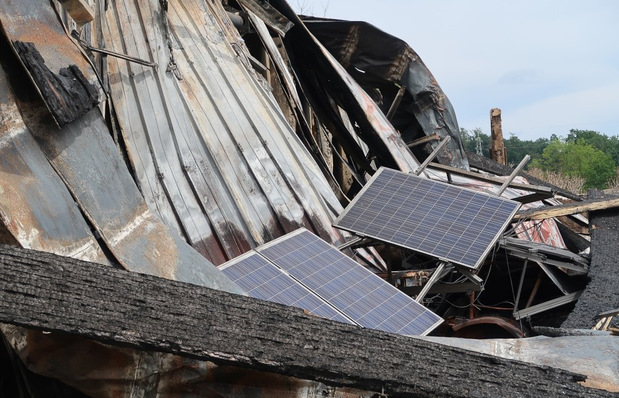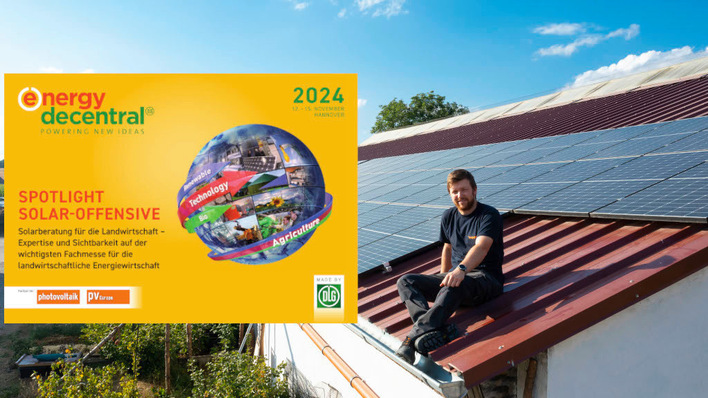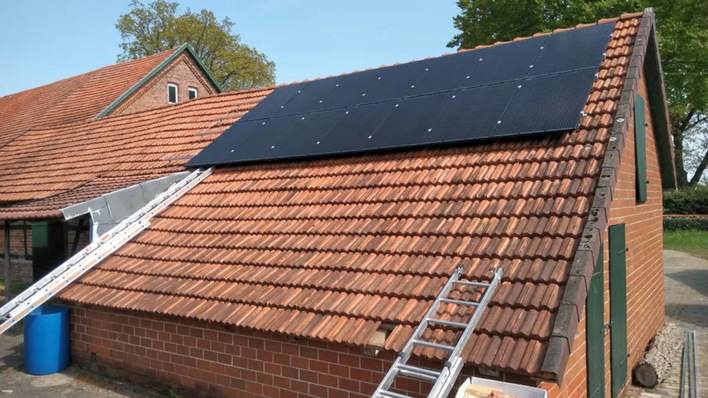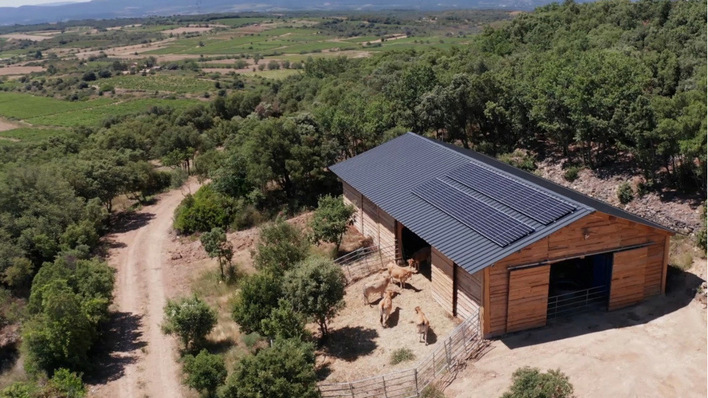In Kressbronn on Lake Constance, a solar plant has been built that canopies apple trees. It is one of a total of five research and demonstration plants in the Agriphotovoltaics Model Region for Baden-Württemberg, with which the Kompetenzzentrum Obstbau Bodensee (KOB), the Fraunhofer Institute for Solar Energy Systems (ISE) and eleven other project partners want to explore the possibilities of dual use of agricultural land.
Kretschmann came to the start of production
The solar and agricultural yields of the research facilities will be recorded continuously until 2024. In the process, the researchers want to examine in detail the effects of photovoltaics on the yields of the pome and soft fruit fields they are covering with them. "Agriphotovoltaics offers a huge opportunity for agriculture, for sustainability and for energy supply," emphasises Winfried Kretschmann, Minister President of Baden-Württemberg, during his visit to the plant on the Bernhard fruit farm in Kressbronn, which has now gone into operation.
See also: The smarter E Europe 2022: Record attendance in Munich
With the Agriphotovoltaic Model Region Baden-Württemberg, the state wants to show how double harvesting works - here, for example, solar energy and apples, Kretschmann explains. "We are providing a total of almost 2.5 million euros for this over the next three years," he says. The opening of the plant in Kressbronn marks a milestone in the development of agriphotovoltaics, he adds.
Existing orchard solar-roofed
For farmer Hubert Bernhard, the plant is the next step towards sustainable management of his fruit farm. "We have already been generating solar power on the roofs of our farm buildings since 2010 and asked ourselves: could we also produce electricity with the hail nets above our orchards?", he reports about his motivation to provide cultivation area for the pilot plant. "The result is the first agriphotovoltaic system over an existing orchard." In total, the project participants have solar-roofed about 0.4 hectares with solar modules with a total capacity of almost 250 kilowatts.
1.7 megawatts of agri-PV output will be created
In total, the researchers will roof five different pome and soft fruit crops with solar modules as part of the project. They will achieve an output of no less than 1.7 megawatts. In addition to the systems in Kressbronn on Lake Constance, further systems will be built in Bavendorf, Heuchlingen, Karlsruhe and Oberkirch-Nußbach. The overall goal of the project is to answer open questions about the dual use of land for agriculture and solar power generation.
Investigating the effects on solar modules
The researchers also want to investigate the feasibility of different promising applications and technologies, which is why they are focusing on different crops that they are solar-roofing. In doing so, they are investigating plant growth under the modules in detail. "In addition to investigating the effects of varying shading on the growth and ecophysiology of apples, this also includes research activities on the effects of pesticide use on photovoltaic modules," explains Oliver Hörnle, project manager at Fraunhofer ISE. "For us, agriphotovoltaics is another important building block for sustainable fruit production at Lake Constance: protected and thus safe and high-quality apple production with additional solar power production," adds Ulrich Mayr, deputy managing director of the KOB.
Finding the right plant design
The scientists also want to research different design variants. When planning the different plant designs for the model region project, however, they were already able to draw on initial experience from the construction of an agriphotovoltaic plant for fruit cultivation in Rhineland-Palatinate. (su/mfo)







